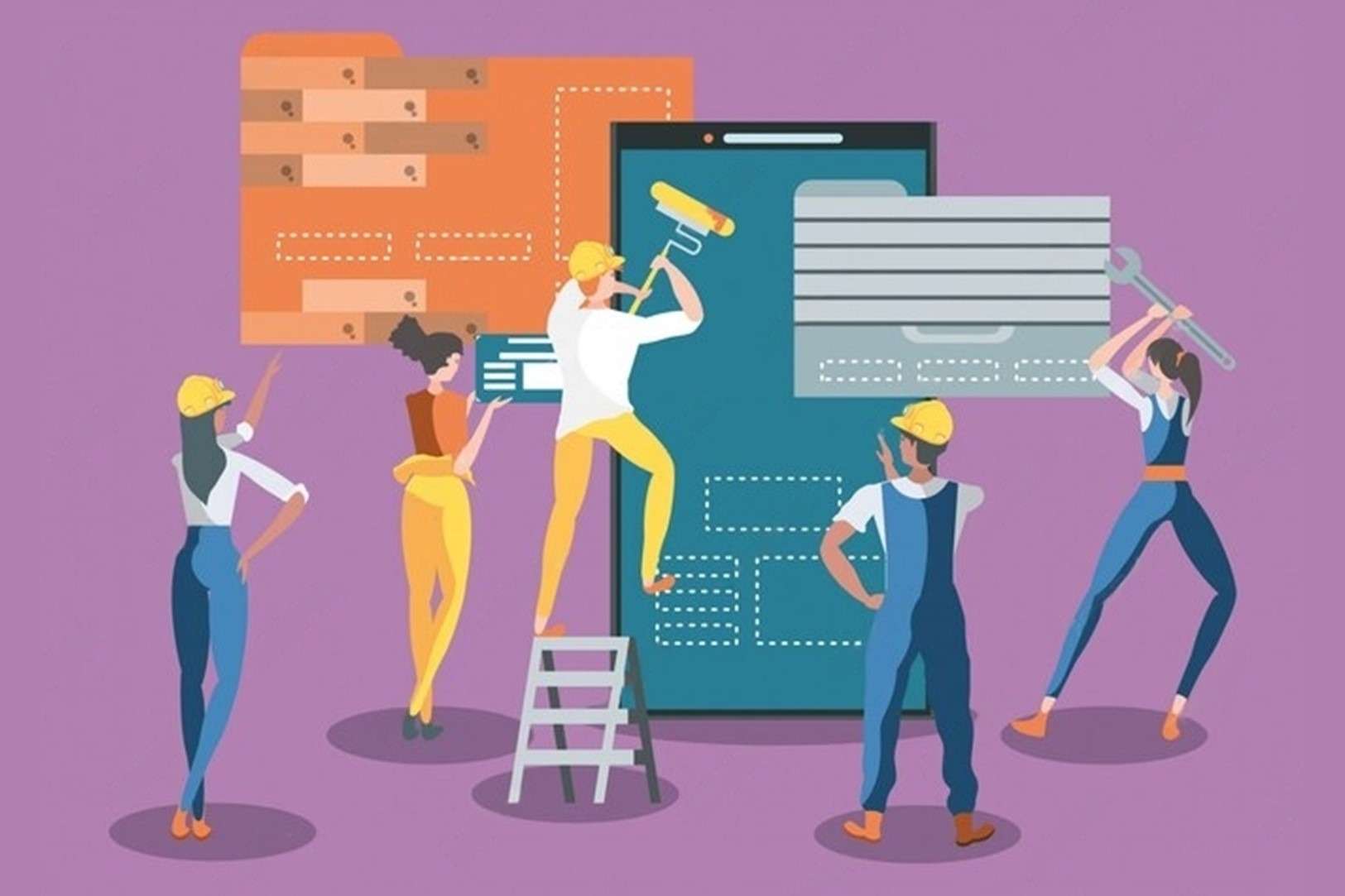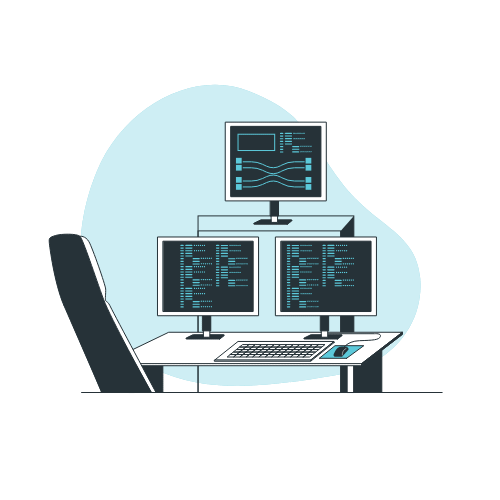Are you ready to delve into the fascinating world of platform development? As technology continues to evolve at lightning speed, creating platforms that connect users to digital services has become more crucial than ever before. It’s a complex process that demands meticulous planning, creativity, and a forward-thinking mindset. But don’t worry—we’ve got you covered!
In this article, we’ll be revealing practical tips and tricks from industry experts to help you master the art of platform development. From selecting the right technology stack to designing a user-centric interface, ensuring scalability, and taking care of post-launch maintenance, we’ll guide you through the maze of decisions and challenges.
Whether you’re an aspiring developer or a seasoned tech guru, these insights will help you stand out in a crowded market and create platforms that truly make a difference. So, let’s dive in!
Understanding Platform Development Basics
Are you thinking of developing a platform? Well, let me tell you, it’s no easy feat! The process is complex and requires a lot of attention to detail. You need to create a software foundation that can support various applications and services, each with its own unique requirements and user base. But what’s the secret to success, you ask? It’s simple—choosing the right technology stack! A technology stack is a set of programming languages, frameworks, and tools that form the backbone of a platform. The right choice of technology stack can significantly impact the platform’s functionality and scalability.
For instance, if you’re developing a dynamic web application, you might want to consider the MERN (MongoDB, Express.js, React, and Node.js) stack. On the other hand, if you’re developing a traditional web application, the LAMP (Linux, Apache, MySQL, and PHP) stack might be your go-to option. By understanding these basics, developers can create a robust, versatile, and efficient platform that meets all their requirements. So, go ahead, pick the right technology stack, and build the platform of your dreams!
Be Meticulous in Planning and Strategy
If you want to build a platform that truly knocks it out of the park, you’ve got to be meticulous in your planning and strategic in your execution. Start by conducting a thorough analysis of what you need to accomplish. What’s the platform’s purpose? Who’s your target audience? What challenges are you trying to solve? Knowing the answers to these questions is essential to success.
But that’s just the beginning. You also need to set realistic timelines and milestones to keep everyone moving in the same direction and ensure that you deliver a high-quality product on time. And when things change (as they inevitably will), you need to be agile and adaptable. Embrace an iterative approach that lets you pivot quickly and stay in tune with your users’ needs.
By taking these steps, you can set your team up for success and create a platform that truly makes a difference.
Choosing the Right Technology Stack

Selecting the right technology stack can have a huge impact on the entire platform development process. It’s important to strike a balance between the latest and most innovative technologies and those that have proven themselves over time. JavaScript is a great example of a versatile language that is widely used in many stacks, while Python is an ideal choice for backend platform development due to its simplicity and power.
But wait, there’s more! Have you considered React? It’s a fantastic technology that’s worth considering. Its component-based architecture makes it highly scalable and efficient for complex user interfaces. And guess what? Airbnb has already made the switch to React Native for their mobile platform, and it’s been a huge success! By doing so, they were able to achieve seamless cross-platform development and enhance the overall user experience.
Remember, the key is to choose a technology stack that not only meets the project’s requirements but also provides the flexibility and scalability needed for future growth.
User-Centric Design and Platform Development
Developing a successful platform requires a user-centric approach. This starts with designing an interface that looks good, is easy to use, and is responsive. By aligning the user interface (UI) and user experience (UX) with the users’ expectations and behaviors, navigating the platform becomes effortless and users stay engaged.
Incorporating user feedback early and often in the platform development process is crucial to tailoring the platform to real-world needs and preferences. This ensures that the platform meets the expectations of its users. Effective UI/UX design enhances user satisfaction, which is important for platform adoption and retention. Techniques such as user journey mapping and A/B testing can provide valuable insights into user preferences and behavior, leading to more informed design decisions.
Scalability and Performance Optimization
To build a strong platform, it is essential to focus on scalability and performance. This ensures that the platform can handle increased loads and user growth without any degradation in its performance. To achieve this, developers must optimize their code, use efficient algorithms, and leverage cloud services for flexibility and scalability.
Moreover, it is crucial to use performance optimization techniques like caching, load balancing, and database optimization to ensure that the platform remains responsive and efficient under varying loads. One of the best examples of such an approach is Netflix’s use of cloud computing and microservices architecture, which allows it to manage massive amounts of traffic and data efficiently, providing seamless streaming experiences to millions of users worldwide.
By prioritizing scalability and performance from the start, developers can build platforms that not only meet current demands but are also well-equipped to handle future growth.
Security and Compliance
Ensuring the security of user data is extremely important in today’s world, where data breaches are becoming more common. Security and compliance are critical components of platform development, and they should never be compromised. To achieve this, robust security measures such as encryption, secure coding practices, and regular vulnerability assessments need to be implemented. Platforms, particularly those that deal with sensitive information, must comply with legal standards such as the General Data Protection Regulation (GDPR) for European users or the Health Insurance Portability and Accountability Act (HIPAA) for health-related applications.
It’s crucial to integrate security into the platform development lifecycle from the beginning. This can be achieved by using secure coding, secure frameworks and libraries, and conducting regular security audits and penetration testing. Additionally, educating the platform development team about the latest security threats and best practices is essential for maintaining a high level of security vigilance.
Testing and Quality Assurance

To ensure that our platform is reliable and robust, it is essential to carry out quality assurance and rigorous testing. Several types of testing, such as unit, integration, system, and user acceptance testing, are crucial to ensuring that the platform functions as intended. Unit testing checks individual components to ensure that they work correctly, while integration testing ensures that these components work seamlessly together. System testing assesses the platform’s overall functionality, and user acceptance testing confirms that it meets the users’ needs and expectations.
We can streamline the QA process using tools such as Selenium for automated testing and JIRA for bug tracking. This step is critical to identify and resolve issues before they affect users, ensuring that the end product is of high quality. Regular updates and maintenance further improve the platform’s performance and security after launch, making it relevant and effective over time.
Deployment and Continuous Integration
Having a smooth deployment process and utilizing Continuous Integration/Continuous Deployment (CI/CD) practices are essential for ensuring that the platform remains robust and relevant. Adopting CI/CD practices can help developers integrate code changes easily and reliably, resulting in faster and less disruptive releases. This approach also facilitates early detection and resolution of issues, which reduces the risk of major problems arising during deployment.
Amazon’s deployment strategy is an excellent example of how effective CI/CD can be. The company reportedly deploys new software to production every 11.7 seconds, demonstrating the efficiency and scalability of the approach. Implementing a successful deployment also involves taking into consideration factors such as load balancing, server configuration, and fallback mechanisms to ensure that the platform remains stable and accessible even during peak traffic periods or updates.
Post-Launch Maintenance and Updates
It is critical to ensure ongoing maintenance and updates following the launch of a platform. This involves monitoring regularly for performance issues, user feedback, and potential security threats. Effective post-launch management requires timely updates to address new requirements, fix bugs, and patch security vulnerabilities.
For instance, Google continuously enhances the functionality and user experience of its platforms, like Google Maps, through regular updates. Platforms must adapt to new technologies and user expectations, which necessitates a proactive maintenance approach. Regular analytics reviews, user feedback channels, and performance monitoring tools can provide valuable insights for continual improvement.
Building a Winning Platform with an Expert Team
In the process of developing a platform, each step is crucial to its success, from the initial idea to managing it post-launch. To create a prosperous platform, you need a combination of strategic planning, user-centric design, technical expertise, and continuous improvement.
As the digital landscape evolves, it is imperative to keep up with the latest trends, technologies, and best practices. Remember, a successful platform requires more than just coding and design; it requires an ongoing commitment to excellence, innovation, and user satisfaction. That is where we come in! Contact us today to get started.
We hope that this guide serves as your compass in the exciting world of platform development, directing you toward creating impactful, efficient, and secure platforms that survive the test of time.




